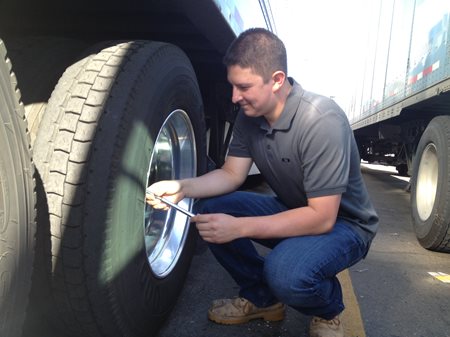Nothing can dampen your day like a roadside inspection. They are a fact of life for owner-operators and independent drivers. Roadside inspections may seem like a nuisance, but they are important. Roadside inspections serve as an on-the-spot safety check-up for commercial motor vehicles and the drivers. With new technology, inspections can happen practically anywhere along the highway, rural roadways, truck stops, and rest areas. So it’s best to be ready for them!
There are several types of roadside inspections with the most common being conducted by Commercial Vehicle Safety Alliance (CVSA) and DOT-trained inspectors. The CVSA has six different levels of roadside inspections with varying degrees of details. Level I is the most common and involves the examination of documents and a detailed vehicle inspection. It normally takes about 30 minutes to complete this type of inspection, which might seem like eternity when you’re on a tight schedule. However, if you plan ahead and prepare, you’ll pass your roadside inspection with flying colors in no time!

Keep documents up-to-date and readily available
A “typical” Level I inspection requires a review of your driver’s license, medical examiner’s certificate, driver’s record of duty status (log book), documentation of annual inspection, hazardous materials paperwork, and permit credentials. Your log book should be current to the last change of duty status, but inspectors might review up to seven days. Andy Blair, a DOT-certified inspector, suggests making your documents easy to inspect. Place all your documents in a binder or folder so the inspector can quickly go through everything at once. You’ll look organized and professional and will probably be on your way faster.
Be professional and courteous to your inspector
This should go without saying, but attitude counts. Inspectors have the discretion to inspect who they like. If you make inappropriate or rude remarks you’ve probably just increased your chances of being chosen for an inspection. Inspectors don’t have quotas for handing out citations, but they do have to conduct a certain number of inspections each day. You’ll get picked someday. It’s just part of the job. Just smile and be polite to your inspector.
Keep your truck clean and know where everything is kept
Your truck cab doesn’t have to be immaculate, but it should be relatively clean. If your truck cab looks like a mess then you’ve probably increased your chances of an inspection. When Blair sees a truck cab that just looks and smells bad, he thinks “This guy really doesn’t keep after things too well. The chances of me finding something wrong with the truck are probably better.” Keep things as tidy as you can while you’re on the road.
You should also keep the outside of your truck in working order too. Inspectors will look at things like brakes, tires, windshield wipers and much more. Before each trip make sure you check your lights to ensure they are all in working order. Look at your tires for baldness or sidewall damage. Any tire damage is usually an invitation for a thorough inspection. Additionally, know where the fire extinguishers and emergency triangles are kept.
Be aware of the “Out-of-Service” criteria
Out-of-service violations are serious and need to be addressed immediately. If you attempt to leave before an out-of-service situation has been fixed, you could face disqualification and large fines. Know the out-of-service criteria and check the items when you conduct your pre-trip check. Items include the brake system, coupling devices, frame, fuel system, tires, and many other items.
Roadside inspections are part of the job. They can happen anytime and anywhere. Inspections may be annoying and time consuming, but are important to ensure your safety and the safety of others on the road. So instead of waiting until the next time you are stopped, start by cleaning your cab now, organizing your documents, and brushing up the out-of-service criteria. Be professional, polite, and smile and you’ll be on your way to passing your roadside inspection with flying colors!